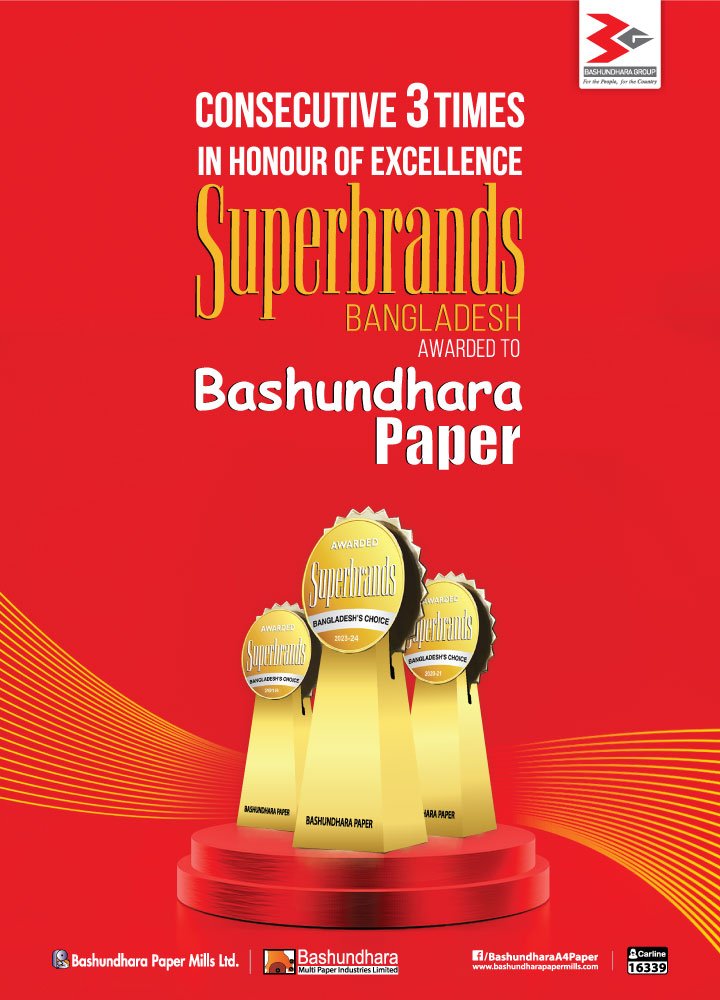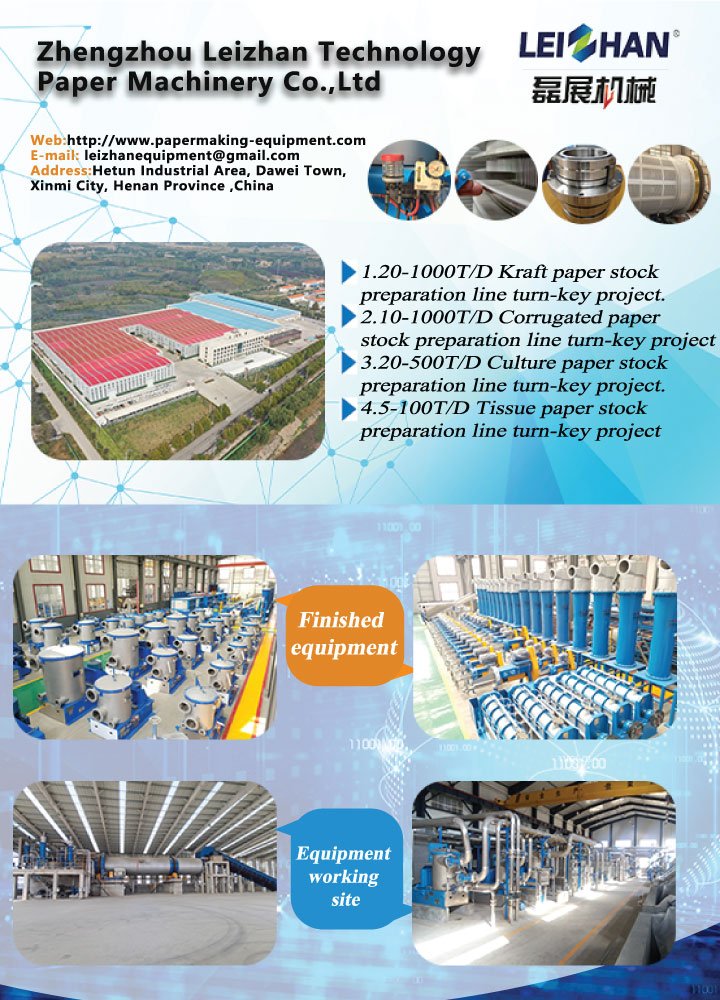ISO Brightness, whiteness and Opacity study on Paper
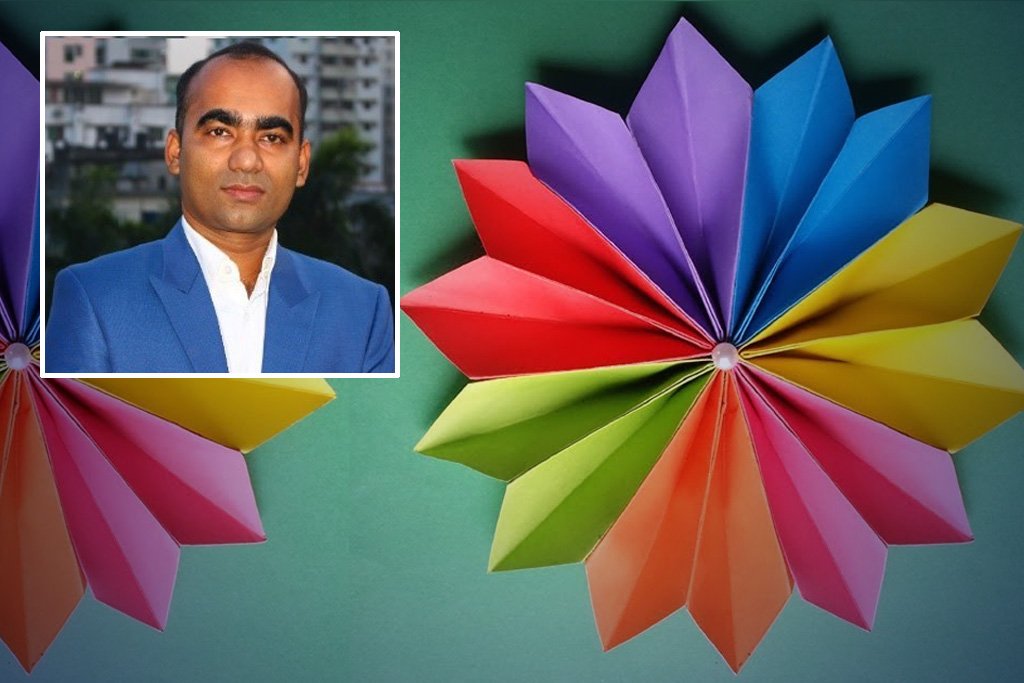
PAPER BRIGHTNESS – Paper brightness
measures the percentage of blue light reflected from the surface of paper at a specific effective weavlength of 457 nanometers (with a half peak of bandwidth of 44 nm). Brightness is measured on a scale of 0 to 100 – the higher the number, the brighter the paper. In other words, 91 bright paper reflects more light than an 85 bright paper, therefore appearing brighter. Using the specific blue light to measure this reflection ignores all other longer and shorter wavelengths, including green and red. Because of this, two types of paper with the same brightness can visually appear very different, even though their “brightness” is the same. There are 3 different type of brightness measurement and testing process using worldwide as per TAPPI standard.
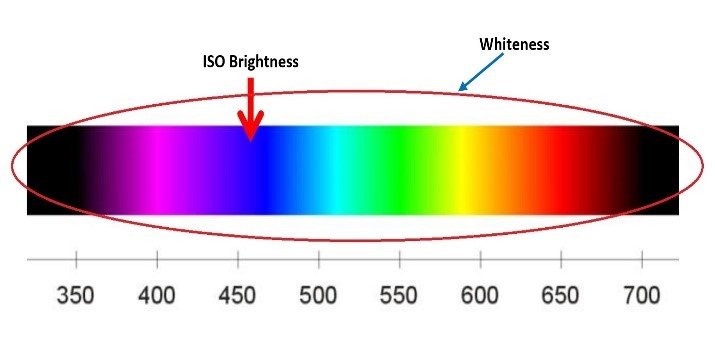
| No | Standard | Illumination / Viewing Geometry | Illuminant / Light Source |
| 1 | ISO Brightness (ISO 2470 -1) | Diffuse (d/0°) | CIE illuminant C |
| 2 | D 65 Brightness (ISO 2470 -2) | Diffuse (d/0°) | CIE Illuminant D 65 |
| 3 | TAPPI T 452 / GE Brightness | Directional (45 ° / 0° ) | CIE Illuminant C |
ISO brightness ISO 2470 – 1 or TAPPI T 525 –
This standard testing method is following in Europe and many other parts of the world including Bangladesh. Here the paper sample is illuminated with a CIE Illuminant C Light source. The instrument illuminates the sample with light projected by two lamps into an integrating sphere. Photocell or diode receptors are positioned at the 0’ position perpendicular to the plane of the paper sample.
D 65 Brightness (ISO 2470 -2)
The D 65 measurement system is essentially same as ISO 2470–1, only exception is the CIE illuminant is D 65, an outdoor daylight containing more amount of UV energy.
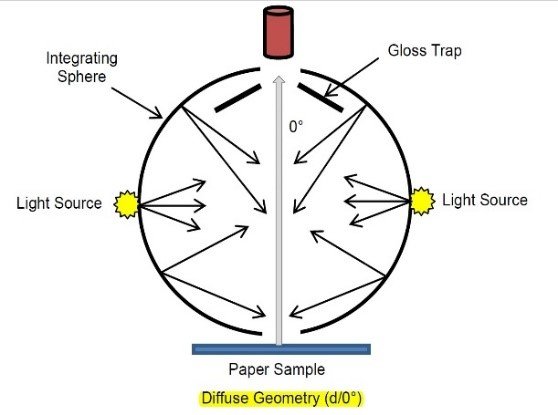
TAPPI T 452 or GE brightness –
T 452 method is often referred as GE brightness and primarily practice in North America. In this method the test instrument emits light which strikes the surface of paper at a 45’ angle of incidence. A Photocell receptor is positioned at 0’ position.

Important Fact:
- D 65 brightness measurement will be higher result for same paper sample compare to other ISO 2470 and T 452 method, when the sample paper contains OBA agent.
- Each of these brightness measurement methods will produce a different brightness number when used to measure the same paper sample.
- T 452 or GE brightness will show lowest result for the same paper sample.
Paper Whiteness
Whereas ISO brightness measures the reflection of specific 457 nm wavelength of light, whiteness measures the reflection of all wavelengths of light across the visible spectrum. Because of this, the whiteness measure is more in line with our visual perception.
So, there will generally be a consensus that the higher the whiteness rating (which also uses a 0-100 scale), the whiter the paper.
Using the entire spectrum of visible light, paper with a very high whiteness number can appear to have a blue tint depending on what light source it is viewed under.
The most common whiteness measure, D65 illumination, represents outdoor daylight. Indoor lighting, of course, will change how white the paper appears and this will vary even more between fluorescent and incandescent bulbs.
Opacity: TAPPI T- 425 Opacity is a measure of the ability of paper to obstruct the passage of light through the sheet. Paper opacity determines whether text or graphics are visible from the opposite side of the paper.

Opacity (Paper backing- sometimes called printing opacity T 425) – is influenced by basis weight (GSM), filler material, bleaching, density, beating / SR or coating materials that are added to the sheet.
Percent opacity is the ratio of the reflectance of a single paper sheet backed with a black backing to the reflectance of the same sheet backed with a white backing. If the white backing is a stack of the same paper, the opacity value is referred to as printing opacity. If the white backing is a surface with a 0.89 reflectance, the opacity value is referred to as contrast ratio.
Opacity values range from a maximum of 100% for perfectly opaque papers (board) to nearly 0% for transparent ones (glassine).
Opacity Measurement:
Ro = light reflectance of a single sheet backed by a black cavity. The subscript zero refers to the fact that the black cavity absorbs all light entering it; thus, the cavity reflects no light and has a reflectance of zero.
R¥ = light reflectance of an opaque stack of sheets (“infinitely thick” stack). This quantity is given a special name, reflectivity.
R0.89 = light reflectance of a single sheet backed by the Tappi standard backing of reflectance 0.89.

| Sample | ISO Brightness | Whiteness | Opacity |
| 1 | 82.76 | 89.37 | 97.95 |
| 2 | 88.89 | 97.63 | 99.56 |
| 3 | 92.50 | 104.63 | 99.73 |
Colorimetry –
Color is a sensory impression of the human brain. The most widely acceptable system of object color description is CIE System.
In the three dimensional CIELAB colorimetric space with the values L* (Lightness), a* (Red/Green axis), b* (Yellow/blue axis) every color can be described.
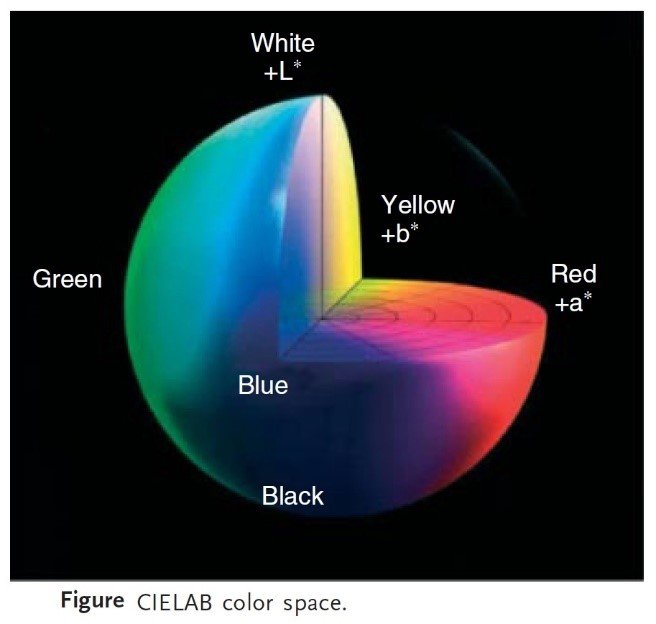
Abbreviation:
- TAPPI – The Technical association of the pulp & paper industry – USA
- ISO – International organization of standard – Switzerland
- CIE – The International Commission on Illumination – Austria
Reference:
- Understanding of paper brightness – Article SAPPI – North America
- TAPPI T 452 om -08 – Brightness of pulp, paper & paperboard.
- Internet https://imisrise.tappi.org/TAPPI/
/Products/01/T/0104T425.aspx
- Handbook of Herbert Holik – 2nd Edition (2013)
Article By:
Delowar Hossain,
CEO @ PAPTECH
+880 1730 430 800









